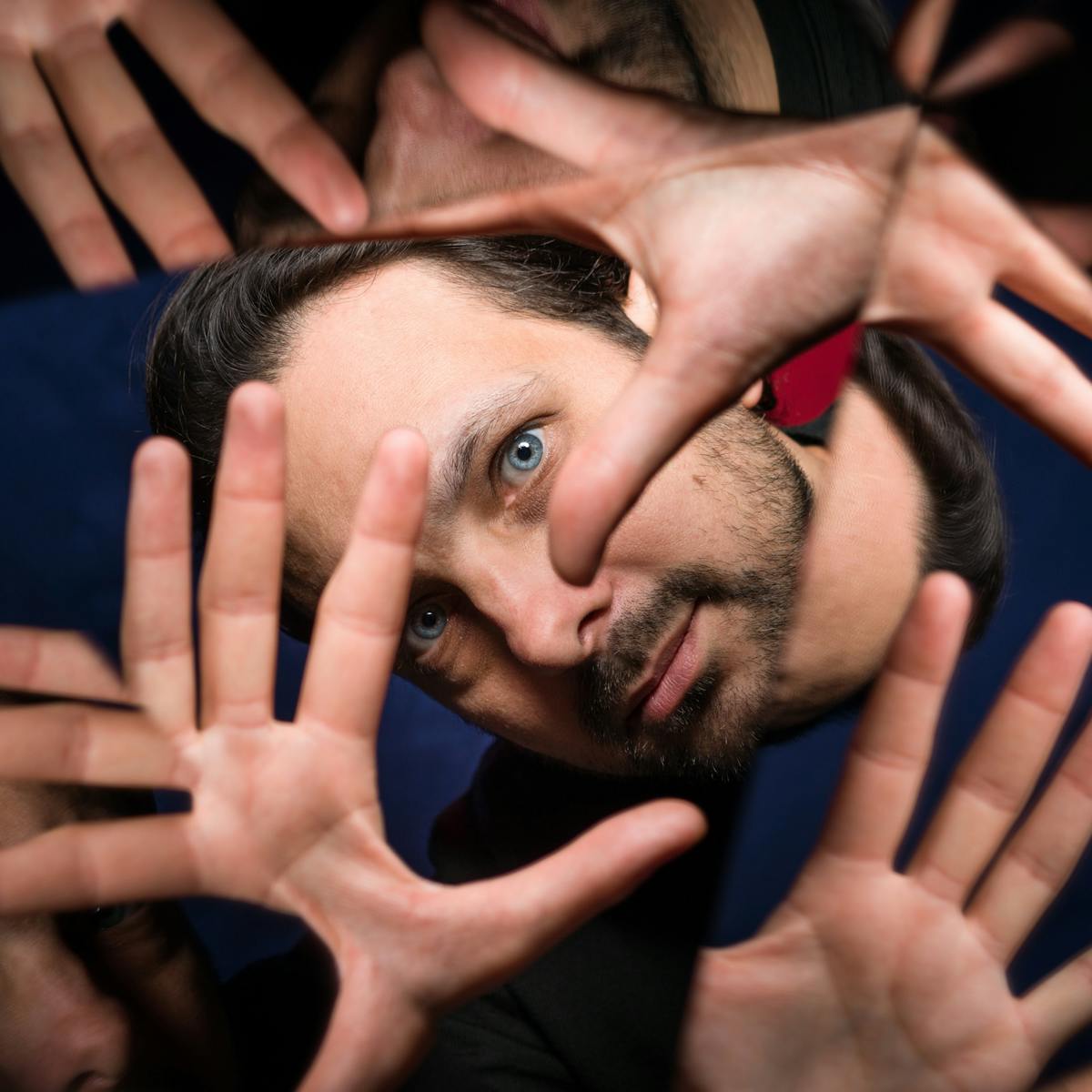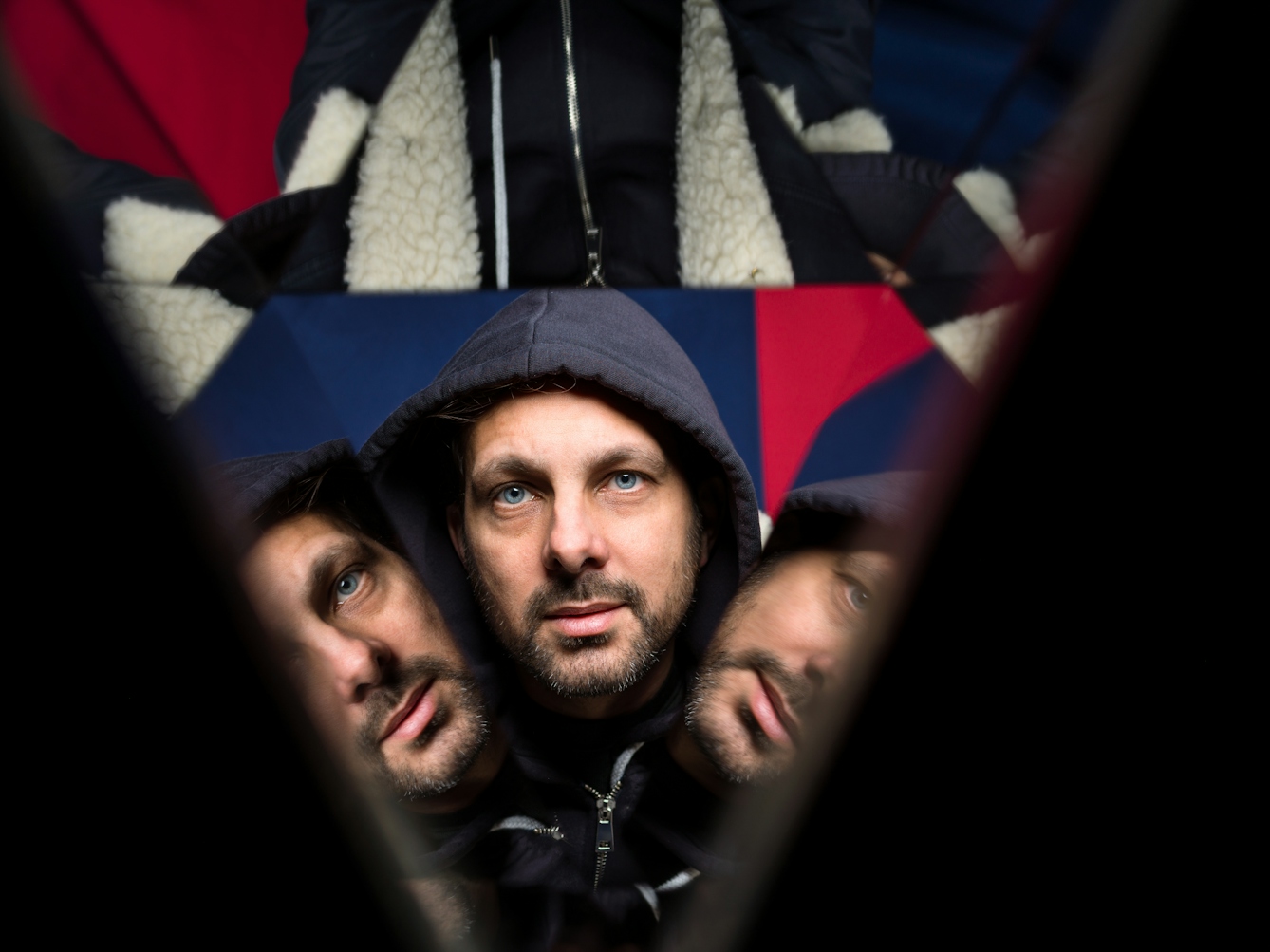Dynamo is best known for his reinvention of close-up magic for modern audiences. But, as he explains to Kate Wilkinson, the past is an important part of his performances.

“Ace of spades, king of hearts, ace of hearts, two of hearts, queen of diamonds.”
We’re standing in front of an exhibit featuring a full deck of cards displayed randomly in a grid, with the most popular cards facing down. You could deduce them by a lengthy process of elimination, but Dynamo stares for just a few seconds before rattling them off, years of experience informing what he knows about how people tend to respond when asked to “pick any card”.
Behind his focused eyes though, it’s clear the cogs are whirring. He wants to get it right. As we tour the Smoke and Mirrors exhibition Dynamo paces and pauses between the various displays, including early spirit photography, magicians’ publicity posters, and a contraption for sawing people in half. Afterwards he said he was surprised by how much he learned, given that he’s spent most his life in magic.
The magician, whose real name is Steven Frayne, first discovered magic’s powerful practical functions as a child. “I didn’t necessarily get into magic to perform for people; I was looking to scare people away who were giving me a hard time at school,” he told me.
The exhibition’s point that magic has important things to teach us about psychology resonates strongly; he might not have been conducting formal experiments, but he was testing what magic could do. ‘Out-psyching’ his bullies through magic helped him to gain advantage over kids who were physically bigger and stronger than him.
Now of course, his main interest is in “creating a moment of wonder” rather than scaring people.

Street style and continuing traditions
Dynamo is at home performing to crowds of passers-by. His informality shows in the way he dresses; instead of the tailcoat and top hat donned by stage magicians, a hoodie and jeans are more his look. Is this a deliberately crafted image? No, Dynamo explains, he was just responding to the environment he grew up in: “The streets were my stage – predominantly the streets on the council estate. I had to bring magic into an environment that wasn’t used to having magic.”
This seems like a stark contrast with showman-style magicians like David Copperfield, who performs in Las Vegas and has an appropriately theatrical style. But Dynamo will adapt his style to the environment, whether that’s a small room or the O2 Arena. “I’ve always liked the idea of doing magic any time, anywhere, with anything,” he says.
Dynamo is drawn to a video demonstration of the princess card trick. In the trick, you’re told to mentally select a card from five cards, and the magician then removes one and displays the remaining four. Your chosen card is always missing. Dynamo’s grandma performed it to him every night of his arena tour – small-scale, personal magic as a companion to enormous public performance.
Remarkable acts of mind-reading are not a family trait, though. As researcher Dr Gustav Kuhn explains in the video, the trick is a reminder of the power of misdirection and the fallibility of memory: it works because, with your attention focused on your selected card, you fail to see what else is happening around you.
I’ve always liked the idea of doing magic any time, anywhere, with anything.
For Dynamo, it’s exciting to see the ‘roots’ of magic tricks like this as well as their connection with psychology. He sees the history of magic as a valuable resource and inspiration rather than something to break away from.
“If you go back a hundred years, when Houdini was around, he was on the streets of London hanging upside down in a straitjacket. The place would be absolutely packed. He would pull as big crowds as you can get in an arena just on the street. I’ve always believed that’s where magic can get to.”
Dynamo’s own magic is a part of that tradition now. We approach a display of magic kits through history, which starts with a set made in 1843 and ends with one of his own from 2015. He’s clearly honoured to be part of the exhibition’s story, but he explains that he finds it ‘mad’ because he didn’t actually have a magic kit growing up, as he couldn’t afford one. “I only got given a Paul Daniels magic kit as a joke present on my 21st birthday,” he says.
Despite the passage of time, each kit contains similar things, like cups, balls and wands. A unique feature of Dynamo’s modern kit is that it includes a pair of earphones alongside the traditional pack of cards.

Challenges and creating everyday magic
He might have his own merchandise and be one of the most recognised names in magic today, but as he told me, he’s still learning: “I’m a student of magic, I’m a student of psychology, I’m a student of perception.” He has ideas he’s been working on since childhood that’s he’s not been able to achieve but hasn’t written off yet.
I ask how easily he finds inspiration after so long as a magician, and he tells me he’s constantly thinking of new ideas.
“The thing that I notice, especially living in London, where everything moves so fast, is that very few people take a moment to just stop and look around them. We’re surrounded by amazing things. Every single thing you look at – like these blackjack sweets” – he gestures at an improbably placed box of blackjacks in the back room where we’re sitting – “started as an idea in someone’s head.” Of course, during our conversation he picks one up and – like magic – makes it disappear.
I’m excited to be around someone who makes small objects disappear as casually as most people breathe. But Dynamo is not complacent about his abilities. He can’t afford to be, because as well as old ambitions, Dynamo faces some new challenges. Last year, his Crohn’s disease flared up due to a serious case of food poisoning, and he was diagnosed with arthritis, making it hard for him to shuffle a pack of playing cards.
Rather than seeing his illness as “the end”, he says he saw it as “a test”. He thought, “I need to step my game up; I need to look outside of my usual remit of how I might try to achieve something and see if I can create something new – and that’s what magic is, really. Magic is taking something that doesn’t exist and bringing it to life.”

The future of magic
There are other challenges for a modern magician too. New formats like YouTube videos have brought magic to wider audiences and created new styles. If it was hard for 19th-century mediums to keep their trickery concealed, it must be even more difficult for a modern street magician surrounded by smartphones.
“For me, magic is about the mystery. We live in a day and age where there are very few things that are kept a mystery any more because we can just go on our mobile devices and google whatever and get the answers,” he says.
In our information age, what’s the future of magic? Will magicians continue to captivate the public consciousness? Dynamo believes so.
“People want to be amazed – they want to witness something that they can’t explain […] I’ve been into magic for over 20 years now and I’m still massively curious about it and about the way the world works. If I still feel this way, that curiosity must be out there in all of us.”
About the contributors
Kate Wilkinson
Kate works at Pushkin Press. When not submerged in a book, she can be found walking or practising Spanish. Sometimes both at once.
Thomas S G Farnetti
Thomas is a London-based photographer working for Wellcome. He thrives when collaborating on projects and visual stories. He hails from Italy via the North East of England.

